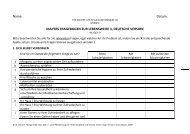Abstracts - York St John University
Abstracts - York St John University
Abstracts - York St John University
Create successful ePaper yourself
Turn your PDF publications into a flip-book with our unique Google optimized e-Paper software.
how it constructs and produces certain modes of behaviour. Finally, the visual recordings<br />
produced by the research participants demonstrate that the behaviours and performances<br />
are part and parcel of complex, routine and routinised engagements with the building.<br />
These performances are shaped by a range of factors including place, space, mobility,<br />
agency, power and the visual, and are constantly rearticulated and reimagined in ways that<br />
suggests we understand such buildings and the relations within them, not as static or fixed,<br />
but as ‘events’ (Rose et al 2010: 346), as ‘mobile’ (Grosz 2001:7) or as ‘process’ (Burke &<br />
Grosvenor 2008: 185-‐6).<br />
Helen Thornham is Research Fellow at the Institute of Communications <strong>St</strong>udies, <strong>University</strong><br />
of Leeds. She is the author of Ethnographies of the Videogame: Narrative, Gender and Praxis<br />
(2011) and co-‐editor of two volumes out in 2013: Renewing Feminisms: Radical Narratives,<br />
Futures and Fantasies in Media <strong>St</strong>udies (with Elke Weissmann, Edgehill) and Content<br />
Cultures: Transformations of User Generated Content in Public Service Broadcasting (with<br />
Simon Popple, <strong>University</strong> of Leeds) Her research focuses on gender and mediations,<br />
narrative, discourse and power and she is currently leading a Network+ within the Digital<br />
Economy theme (EPSRC/RCUK) investigating the digital transformations of communities<br />
and culture.<br />
Performing Lost Space: discussing an exercise in recording architectural detail with<br />
the performing body<br />
Angela Bartram & Douglas Gittens (<strong>University</strong> of Lincoln)<br />
The interior of the contemporary art space provides its users with a sterilised laboratory<br />
for the placement and experience of art. Increasingly, its bleached interior presents an a<br />
priori condition for the legitimate assignment of artworks within the complex milieu of the<br />
contemporary city. Such interiors have become an architectural typology, a predetermined<br />
homogenous non-‐place within which artworks reside. In this sense we can look to Lefebvre<br />
to understand the condition of the gallery space for ‘inasmuch as abstract space tends<br />
towards homogeneity, towards the elimination of existing differences or peculiarities, a<br />
new space cannot be born (produced) unless it accentuates differences.’ (Lefebvre: 1991,<br />
52) The work of the artist, by contrast, liberates difference. More specifically, the art of<br />
performance simultaneously generates and exposes marginal space within the gallery<br />
interior; a corporeal action that deposits residual stains and blemishes across the galleries<br />
internal skin, leaving marks and traces that resist homogeneity to create a temporary site<br />
of differential experience. The lost, forgotten or overlooked marginal zones and<br />
irregularities of a gallery space become a point of ephemeral spectacle and this paper<br />
addresses the impact of this spatial and corporeal collision.<br />
The research that informs and situates these phenomena traces the irregularities,<br />
blemishes and scars that resist conventional mapping; marks that exist within an<br />
alternative, unconventional and unbleached space before, during and after a performance<br />
act. Recorded through orthographic drawing conventions, the research generated a<br />
narrative cartography of corporeal intervention within the interior of X Church Slumgothic,<br />
a heavily used semi-‐decayed community art space in Gainsborough. The co-‐authors of this<br />
research formed a practical collaboration that fused the dynamics and complexities of the<br />
performer’s body with the fixed conventions of architectural drawings. The discussion in<br />
this paper between performer and draughtsman explores how the body becomes an<br />
instrument to record and describe an arts interior beyond, yet from within, traditional<br />
architectural systems of representation.<br />
Douglas Gittens is an architectural designer and senior lecturer in the School of<br />
4



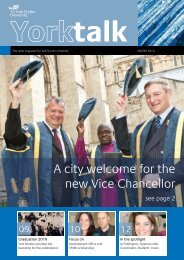
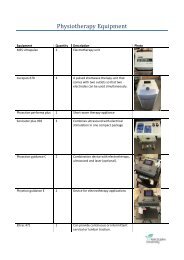
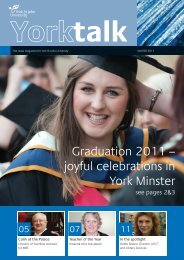


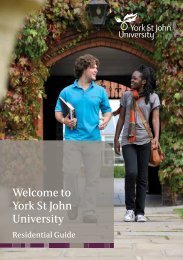

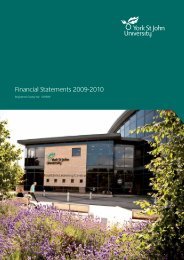


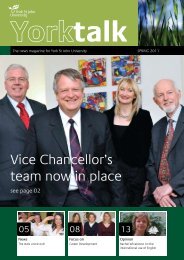

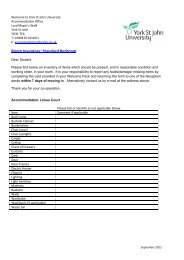
![â'Those [women] who feel strong and hope to find employment, a ...](https://img.yumpu.com/53506972/1/184x260/athose-women-who-feel-strong-and-hope-to-find-employment-a-.jpg?quality=85)
